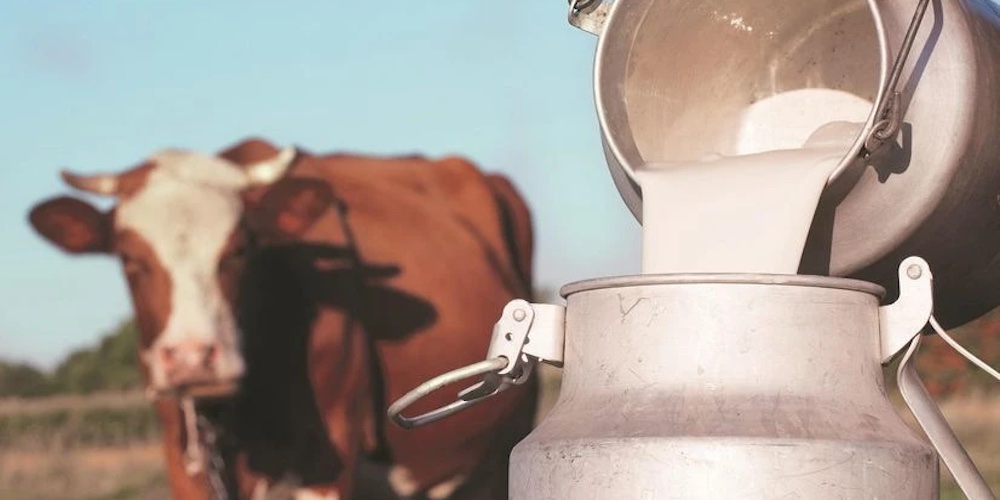India’s Bovine Revolution

India’s Bovine Revolution refers primarily to its White Revolution, a massive dairy development programme launched in 1970 and led by Dr. Verghese Kurien, which transformed the country from a dairy-deficient nation to the world’s largest milk producer. Operation Flood established Anand-pattern cooperatives, directly connecting dairy farmers to consumers and improving farmer incomes and milk availability. The current “White Revolution 2.0” focuses on increasing milk productivity and developing indigenous breeds.
India holds the 1st position in global milk production for several years now, and contributes nearly a quarter of the world’s supply. The dairy sector has grown into one of the strongest pillars of the rural economy and has become central to food and nutritional security. Currently, dairy is the largest agricultural product in India, contributing 5 percent to the national economy and directly employing more than 8 crore farmers . The sector touches more than 8 crore rural households, many of whom are small and marginal farmers. Women play a significant role in production and collection, which makes dairy a strong driver of inclusive growth.
Milk is central to nutritional security, offering quality animal protein and a rich mix of essential nutrients. It is considered a near-complete food, supplying proteins, minerals, vitamins, lactose, and milk fat. Dairy products provide nourishment across all age groups, supporting growth, bone health, and active living. Packed with calcium, magnesium, potassium, and other micronutrients in readily absorbable forms, milk plays a vital role in healthy development, particularly during childhood.
Overall Production
Over the past decade, India’s dairy sector has shown remarkable growth. Milk production rose by 63.56% from 146.30 million tonnes in 2014–15 to 239.30 million tonnes in 2023-24. This means the country has maintained an impressive annual growth rate of 5.7% over the last 10 years. Figures from the Food and Agriculture Organization confirm that India continues to be the largest milk producer in the world, well ahead of countries such as the United States, Pakistan, China and Brazil.
Per capita availability
The availability of milk for each person in India has risen sharply over the past decade. Per capita supply has gone up by 48%, with more than 471 grams/person a day in 2023–24. This is far above the world average of around 322 grams/person a day.
Growth in Bovine Population
India’s 303.76 million bovines, which include cattle, buffalo, mithun and yak, form the backbone of both dairy production and drought power in agriculture. Sheep, with a population of 74.26 million, and goats, numbering 148.88 million, also play a vital role, especially in milk production in arid and semi-arid regions. Between 2014 and 2022, India recorded a 27.39% growth in productivity of bovines (Kg/year), the Highest in the World, ahead of China, Germany and Denmark. This growth is well above the global average increase of 13.97%.
This growth in bovine population is the result of schemes like Rashtriya Gokul Mission that focuses on bovine breeding, genetic upgradation, enhancing productivity of breeds. Also, under the Livestock Health Disease Control Programme (LHDCP), Mobile Veterinary Units (MVUs) have been established for delivery of veterinary healthcare services including disease diagnosis, treatment, vaccination, minor surgical interventions, audio-visual aids and extension services at farmers doorstep for animals’ treatment.
Further, ayurveda is being integrated with modern veterinary practices for sustainable livestock health. Ethno Veterinary Medicine (EVM) is a cost-effective, eco-friendly option to tackle antibiotic resistance. Its use in treating bovine mastitis shows promise in reducing dependence on synthetic drugs and supporting healthier, more resilient dairy systems.
Strength of the Cooperative Dairy Network
The cooperative dairy sector in India is extensive and well organised. As of 2025, It includes 22 milk federations, 241 district cooperative unions, 28 marketing dairies and 25 Milk Producer Organisations (MPOs). Together, they cover about 2.35 lakh villages and have 1.72 crore dairy farmers as members.
A defining feature of India’s dairy sector is the strong role played by women. Nearly 70% of the workforce in dairy farming consists of women, and about 35% are active in dairy cooperatives. Across the country, more than 48,000 women-led dairy cooperative societies operate at the village level, bringing inclusive growth and empowerment to rural communities.

NDDB Dairy Services (NDS) has also supported 23 Milk Producer Organisations, of which 16 are entirely run by women. In these, all producer directors on the boards are women, making them role models for inclusive growth in the sector. These MPOs also bring together nearly 1.2 million milk producers across 35,000 villages, making cooperatives a strong pillar of the country’s dairy growth.
The impact of this transformation is visible. The all-women Shreeja Milk Producer Organisation received the prestigious Dairy Innovation Award from the International Dairy Federation at the World Dairy Summit in Chicago for its pioneering work in empowering women.
Journey of India’s Dairy Revolution
The dairy journey of modern India began with the setting up of the National Dairy Development Board (NDDB) in Anand in 1965. The objective was to replicate the Anand experiment of organizing the dairy farmers of Kaira district of Gujarat into the Kaira District Cooperative Milk Producers’ Union Limited, the precursor of Amul. Verghese Kurien, was made the first chairman of NDDB. Operation Flood was launched in 1970 with the aim of setting up Anand-pattern cooperatives in milk-producing areas across the country, from where milk collected by these cooperatives would be supplied to cities. This eventually transformed India into the world’s largest milk producer. NDDB was later declared an Institution of national Importance through an Act of parliament in 1987.
Rashtriya Gokul Mission – An Important initiative supporting Dairy Sector
The Department of Animal Husbandry and Dairying has been implementing Rashtriya Gokul Mission (RGM) since 2014 for development and conservation of indigenous cattle and buffalo breeds, genetic upgradation of bovine population and enhancement of milk production and productivity of bovines. The revised Rashtriya Gokul Mission has been introduced in March 2025, to accelerate the growth of the livestock sector. It is being implemented as a Central Sector component of the Development Programmes scheme with an additional outlay of Rs.1000 crore, making the total allocation Rs. 3400 crore for the 15th Finance Commission cycle from 2021–22 to 2025–26.
The scheme continues the earlier activities of the Rashtriya Gokul Mission. It focuses on strengthening semen stations, expanding the Artificial Insemination network, and implementing bull production and accelerated breed improvement programmes through sex sorted semen etc.
With the implementation of the Rashtriya Gokul Mission and other efforts of the Government, milk production has increased by 63.56% in the last ten years. Productivity has also increased by 26.34% in the last ten years.
Future Vision: White Revolution 2.0
The launch of Standard Operating Procedure (SOP) for White Revolution 2.0 on 19.09.2024, and the formal launch on 25.12.2024, marks a fresh push to strengthen dairy cooperatives, generate jobs and empower women. The White Revolution 2.0 initiative will be implemented for five years during 2024-25 to 2028- 29. By 2028-29, milk procurement by dairy cooperatives is expected to reach 1007 lakh kg per day from current levels. The plan includes: –
(i) Expanding the coverage by dairy cooperatives by the formation of 75,000 new Dairy Cooperative Societies. Women farmers will be drawn into the organized dairy sector by setting up cooperatives in every uncovered village.
(ii) Strengthening of 46,422 existing Dairy Cooperative Societies.
(iii) Embedding sustainability and circularity in the dairy sector by formation of three exclusive Multi-State Cooperative Societies (MSCS) to undertake the following activities: –
(a) To supply cattle feed, mineral mixtures and other technical inputs.
(b) To promote organic manure production and sustainable waste utilization through cooperative efforts, contributing to natural farming and a circular economy by utilization of cow dung and agricultural waste for conversion into organic fertilizers and biogas, in response to rising demand for eco-friendly soil inputs and national sustainability goals.
(c) For Management of hides, bones and horns of fallen animals.
To conclude, India’s dairy sector is the backbone of rural livelihoods and a symbol of inclusive growth. As the largest milk producer in the world, the country has combined farmer-led cooperatives, women’s participation and scientific practices to achieve remarkable progress. With the momentum of White Revolution 2.0, the sector is poised to boost productivity, expand opportunities and continue transforming rural prosperity.


